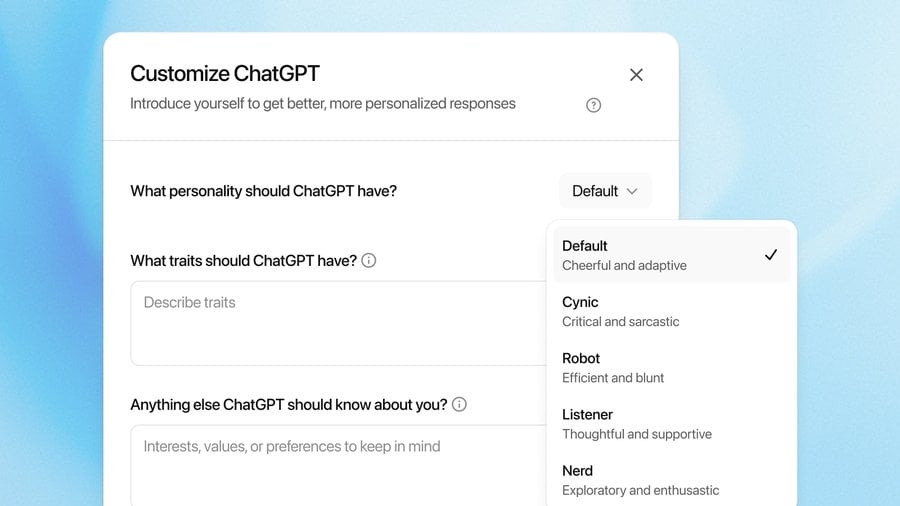GPT-5 Unleashed: How the Cognitive Internet Will Rewire Reality in 2025
The AI singularity just got a turbocharge. OpenAI's GPT-5 isn't just another language model—it's the backbone of the emerging Cognitive Internet, where machines don't just process data but contextualize it like humans. By 2025, this isn't speculation; it's infrastructure.
From Chatbots to Cognitive Architects
Forget simple Q&A. GPT-5's multi-modal framework integrates real-time data streams, enabling AI to draft legal contracts, debug code, and even predict market swings (with better accuracy than most hedge funds, ironically). The line between assistant and agent is blurring.
The Privacy Paradox
With great cognition comes great data hunger. Every interaction feeds GPT-5's adaptive learning—raising familiar Big Tech questions: Who owns the insights when AI refines itself using your queries? (Spoiler: Not you.)
A Cynic's Footnote
Wall Street will inevitably tokenize GPT-5's API calls as a speculative asset. Because nothing fuels irrational exuberance like bundling unregulated AI access into a leveraged ETF.

The shift from GPT-4 to GPT-5 isn’t cosmetic. While previous models were generalists, broadly capable but occasionally brittle, GPT-5 is both specialized and strategic. Under the hood, OpenAI has introduced a multi-model routing system that mimics human-like decision making. In plain English? The system evaluates the complexity of a task and sends it to the best-suited model. Some queries get fast, low-latency answers; others are routed to a slower, more deliberate reasoning engine. It’s no longer just a model trying to be good at everything, it’s an orchestrated system of minds with distinct specialties, stitched together in real time.
And that’s what makes GPT-5 feel more human. When you ask it something hard, it pauses, just for a beat. It thinks. You can feel it deliberating. It’s subtle, but it’s the kind of nuance we associate with people, not software. There’s a composure to GPT-5, a sense of cognitive patience that gives it a different texture than its predecessors.
But what really sets GPT-5 apart isn’t just its mental horsepower, it’s the memory. Persistent memory, long requested and now fully operational, transforms the interaction model. GPT-5 can now remember facts about you, your tone preferences, your previous queries, and even project histories. For enterprise use, that means GPT-5 is no longer a chatbot, it’s your digital chief of staff. For consumers, it means you’re not starting from scratch every time. You’re building a relationship. The AI isn’t smarter because it knows more; it’s smarter because it knows you.

GPT-5 has several personalities you can select from, Source: X
This is also where OpenAI starts to look more like an OS company than an API vendor. GPT-5 arrives in four versions, standard, mini, nano, and a chat-optimized variant, each tailored for specific use cases. The mini and nano models are built for speed, edge devices, and cost-efficiency, opening up a world where intelligent agents can live not just in the cloud, but in your phone, your browser, your car. The full-fat GPT-5 model is more deliberate, more powerful, and noticeably more accurate, especially at reasoning, math, health questions, and, critically, code.
And yes, developers are going to have a field day. GPT-5 doesn’t just crank out snippets, it handles full-stack problems, uses tools effectively, and maintains state in complex chains of thought. It can manage prompts like a product manager, debug like a software engineer, and document like a technical writer. And when it does hit a limit, it gracefully degrades to lighter models without choking on the request. This modularity marks a philosophical shift: GPT-5 is not just a model, it’s a platform architecture.
Still, there’s no bombastic AGI announcement here, OpenAI is careful to draw a line. GPT-5 is a step forward, not the singularity. But it’s the kind of step that bends the curve. It doesn’t replace humans, but it does start to feel like a co-equal contributor. Not a tool. Not a pet. A partner. And that has consequences, technical, ethical, commercial.
We’re entering an era where intelligence is ambient. Where memory is persistent. Where conversations are ongoing. GPT-5 is the vanguard of that shift, not perfect, not omniscient, but startlingly close to something that feels alive in its coherence.

